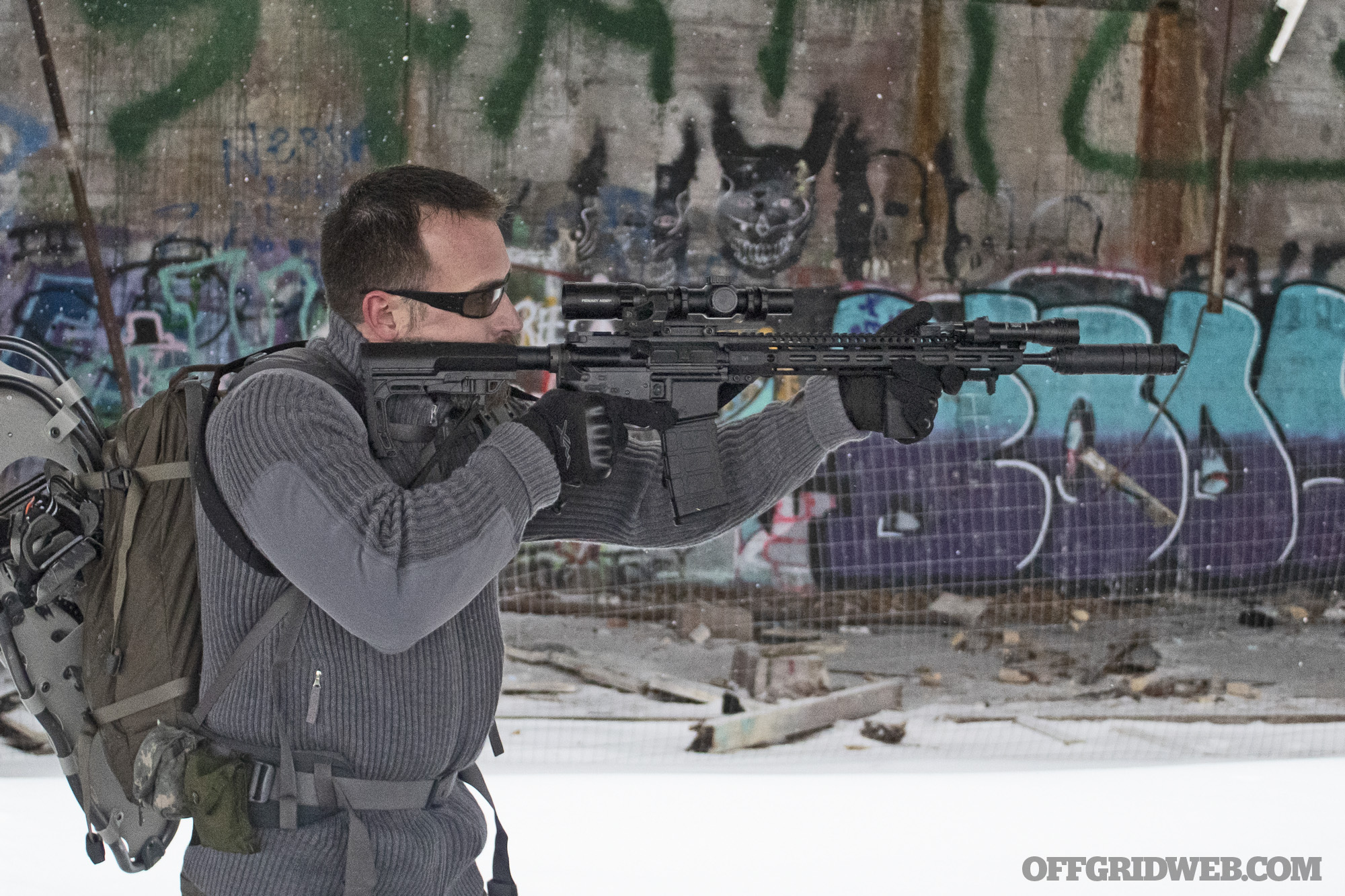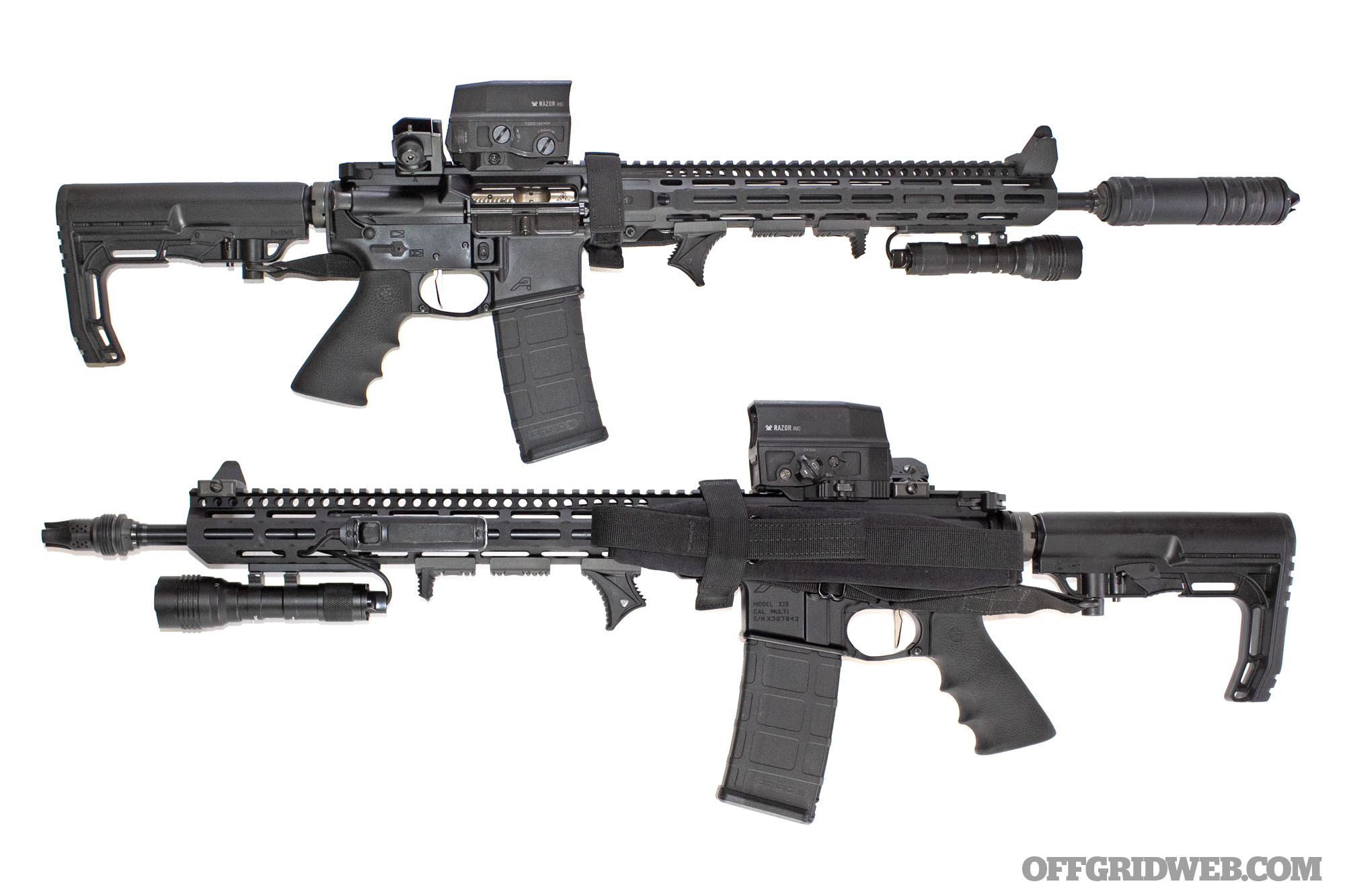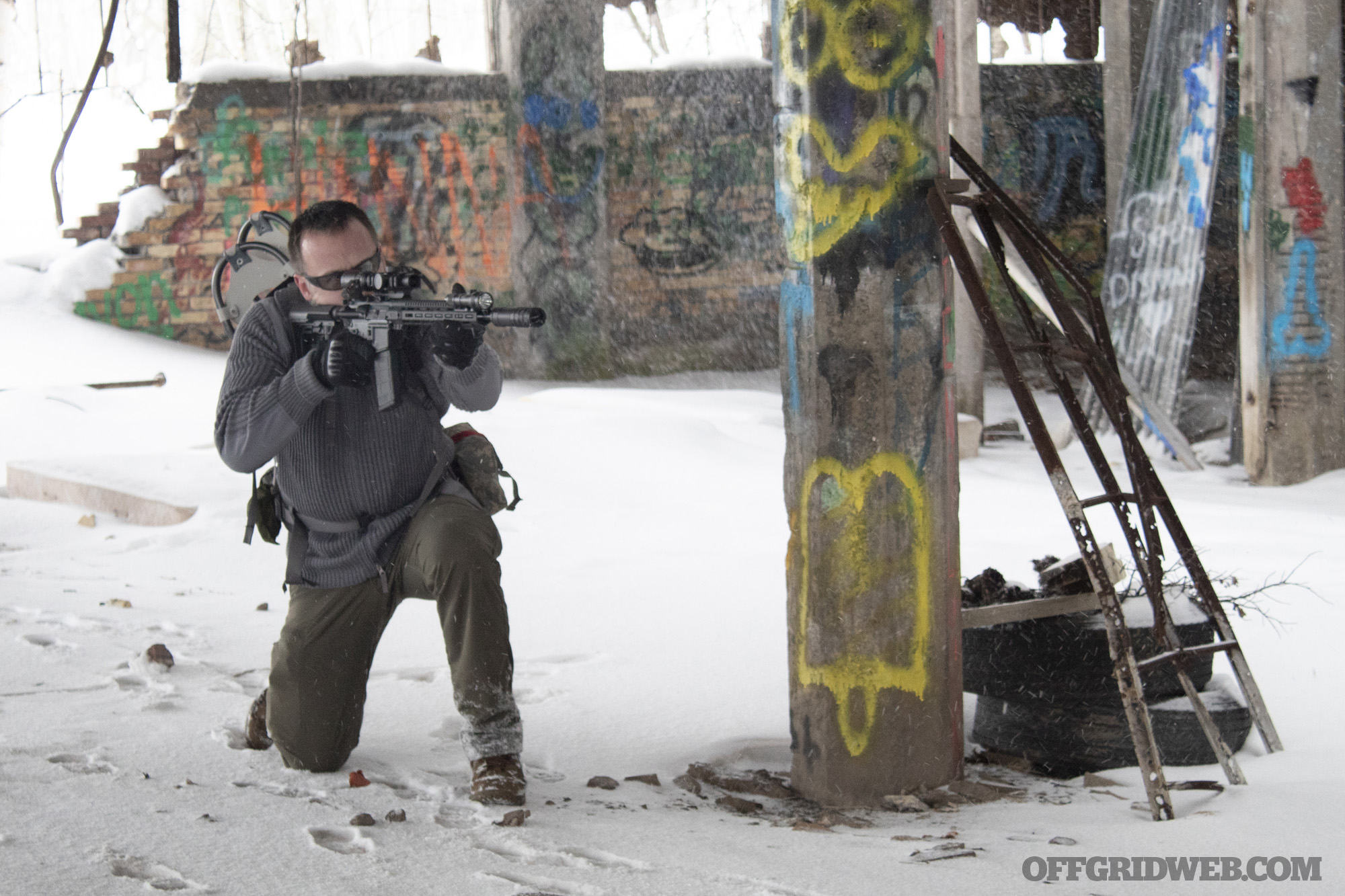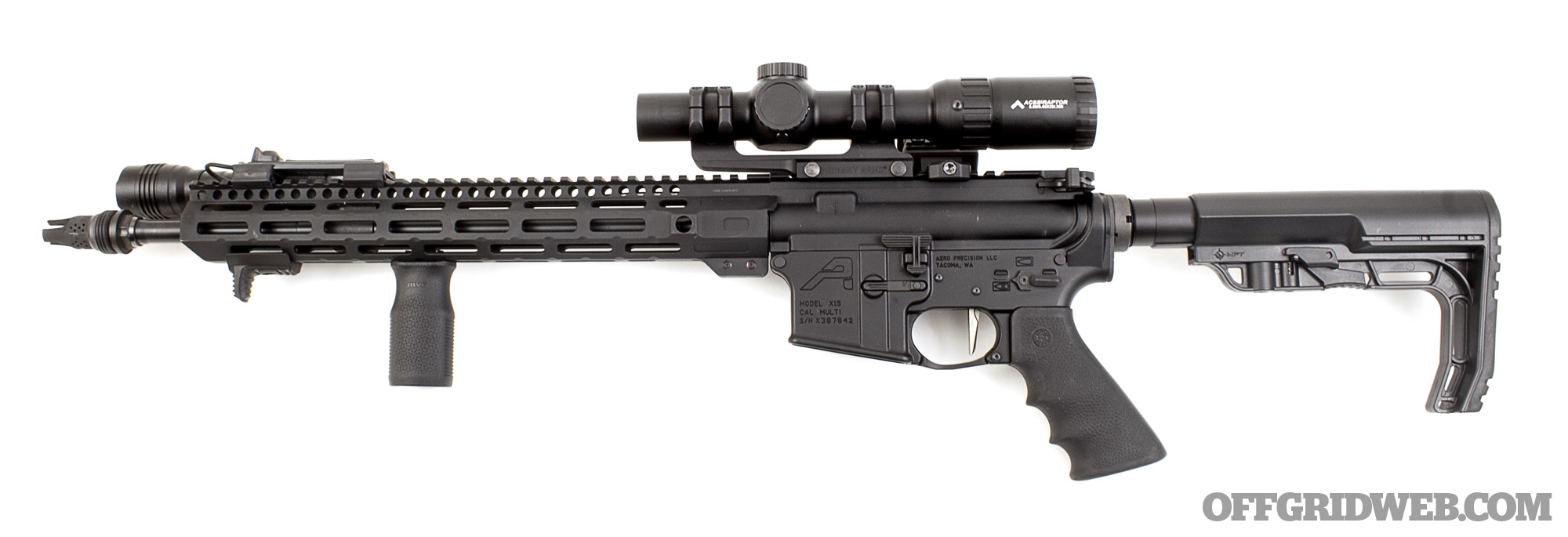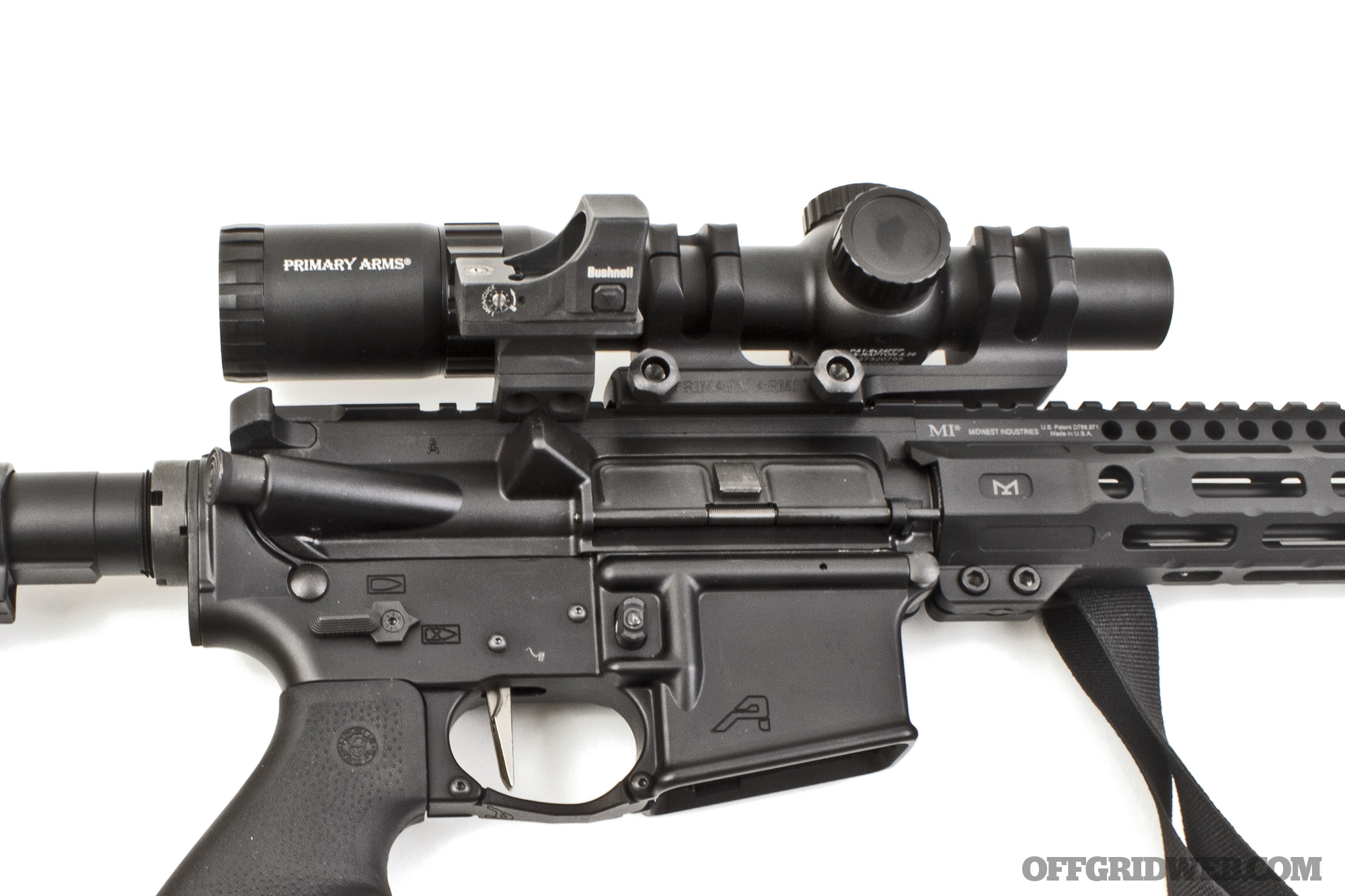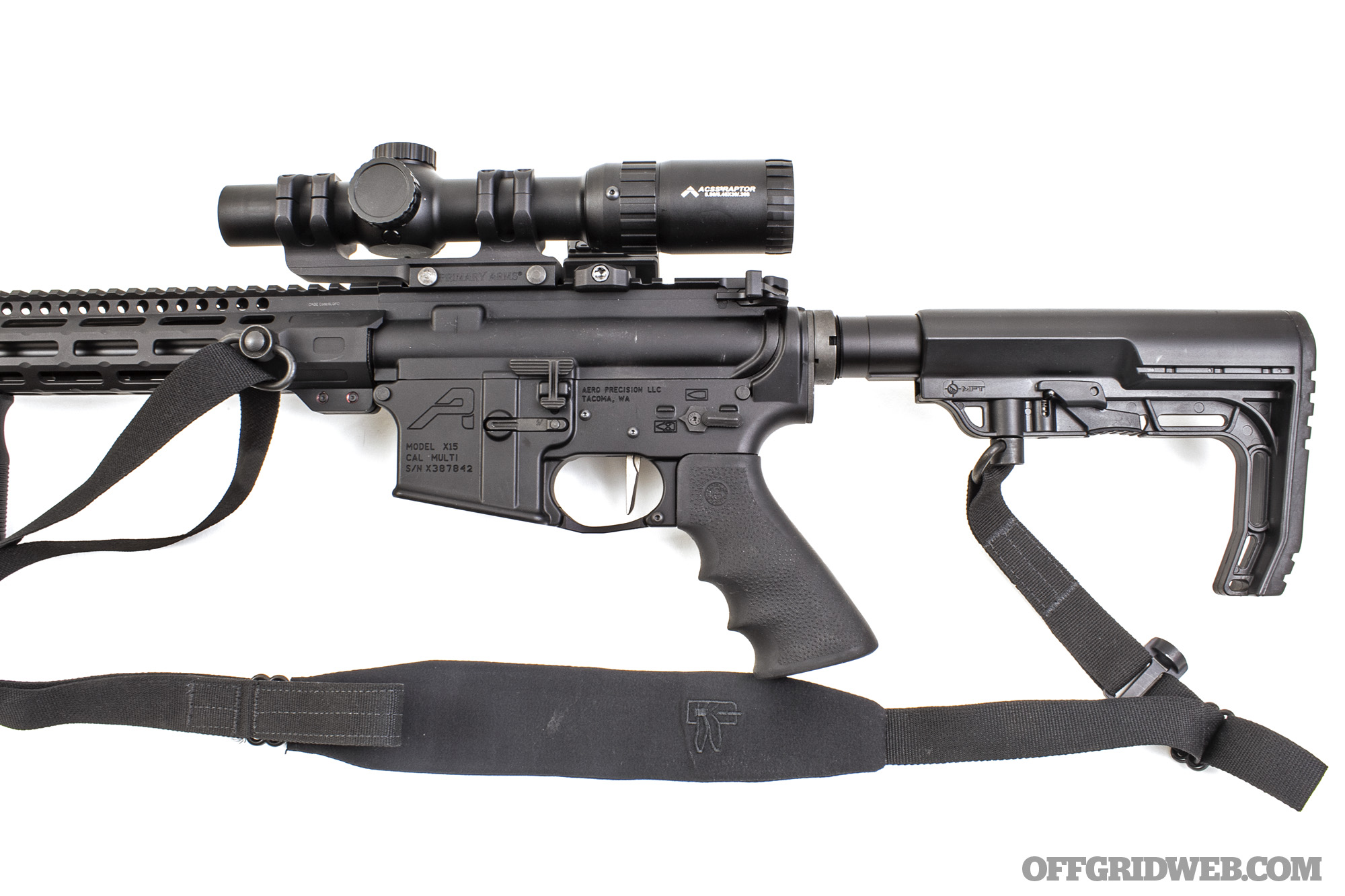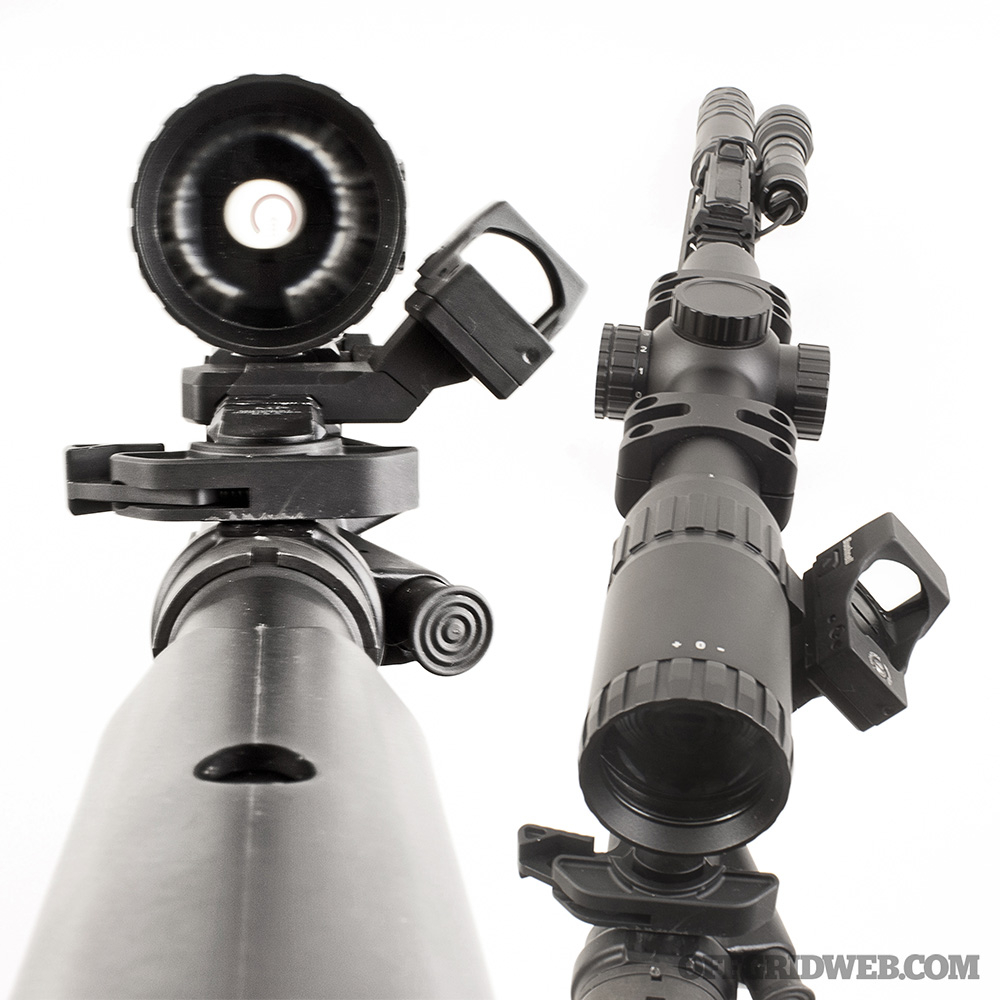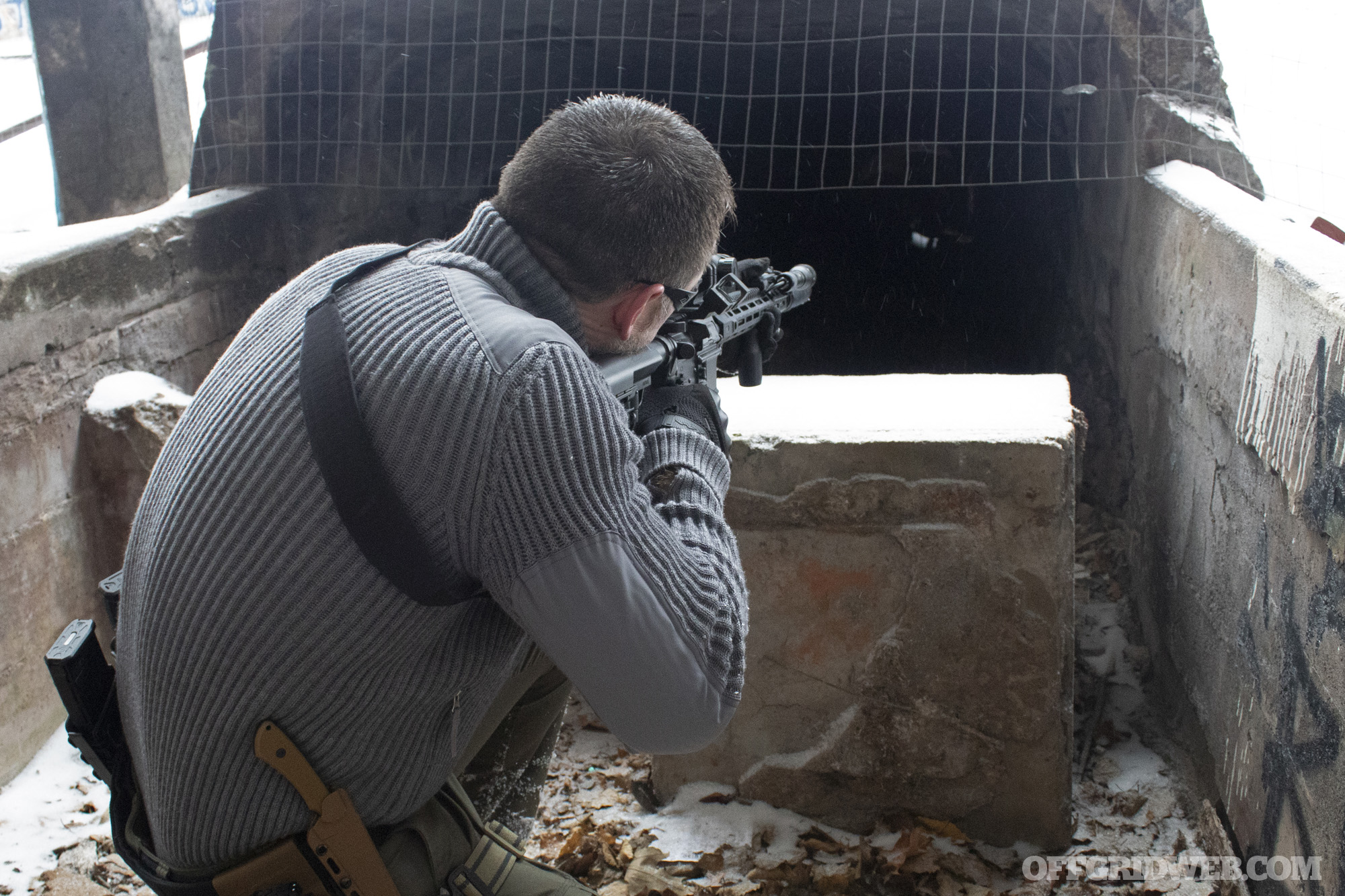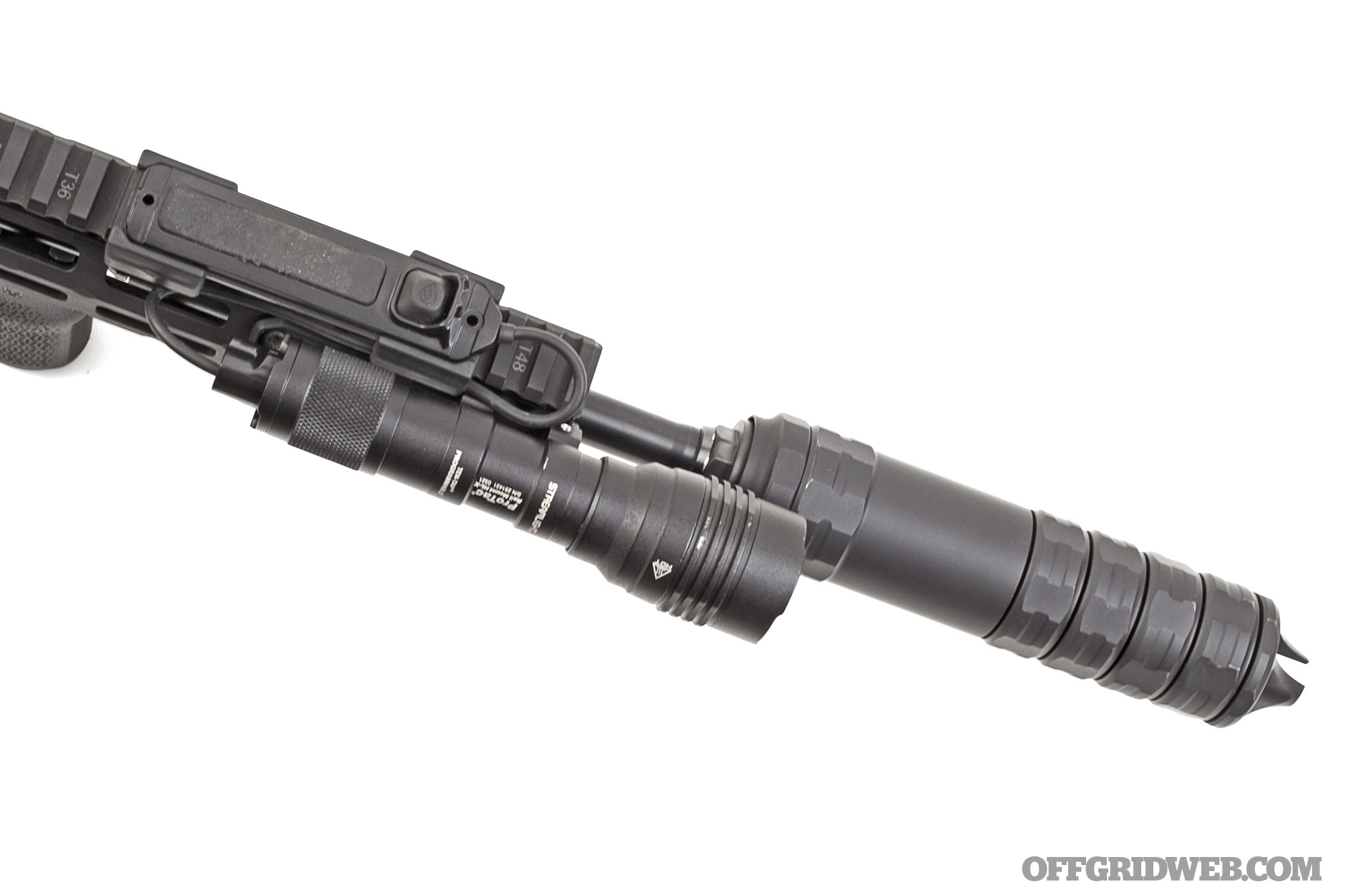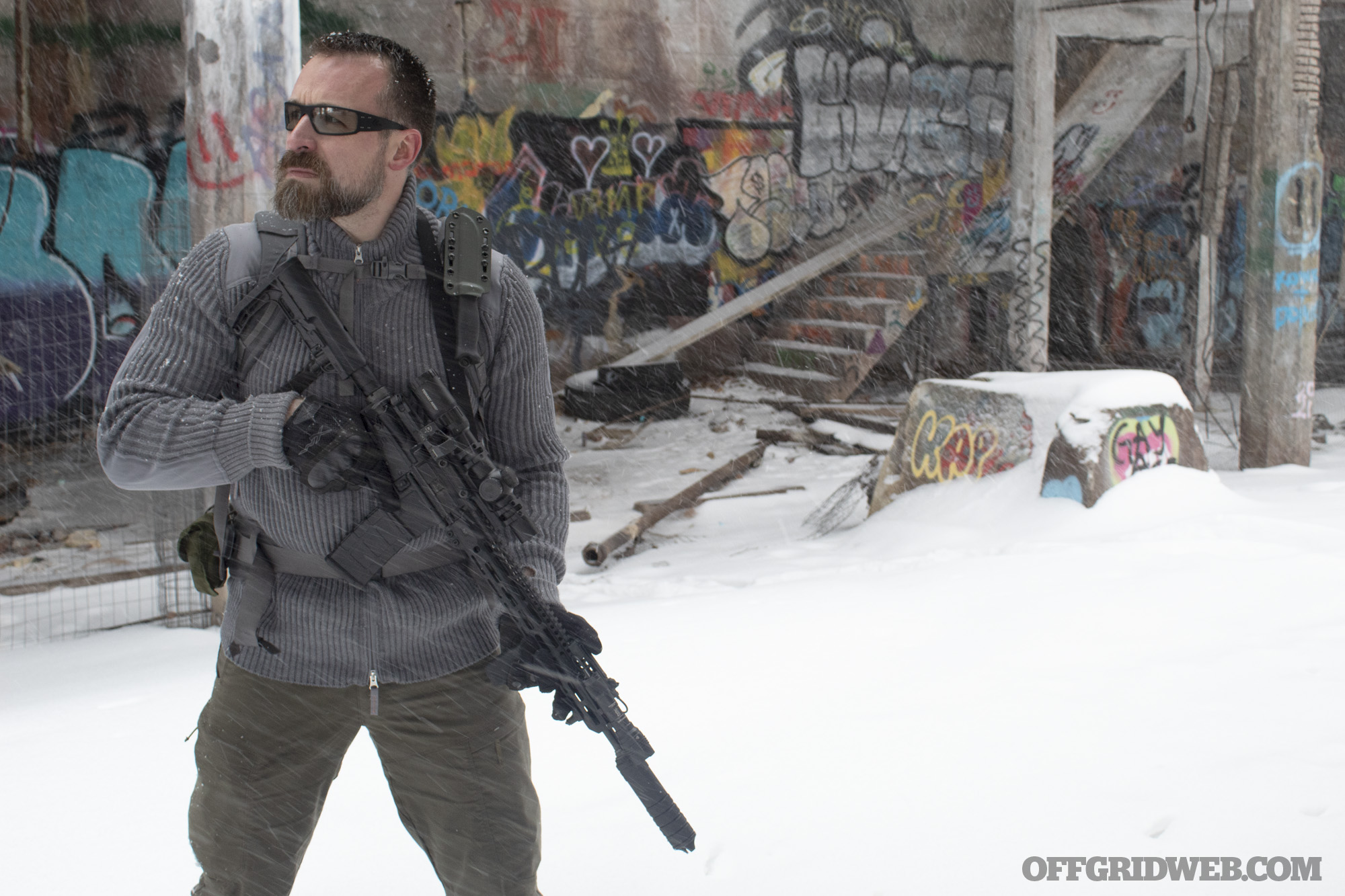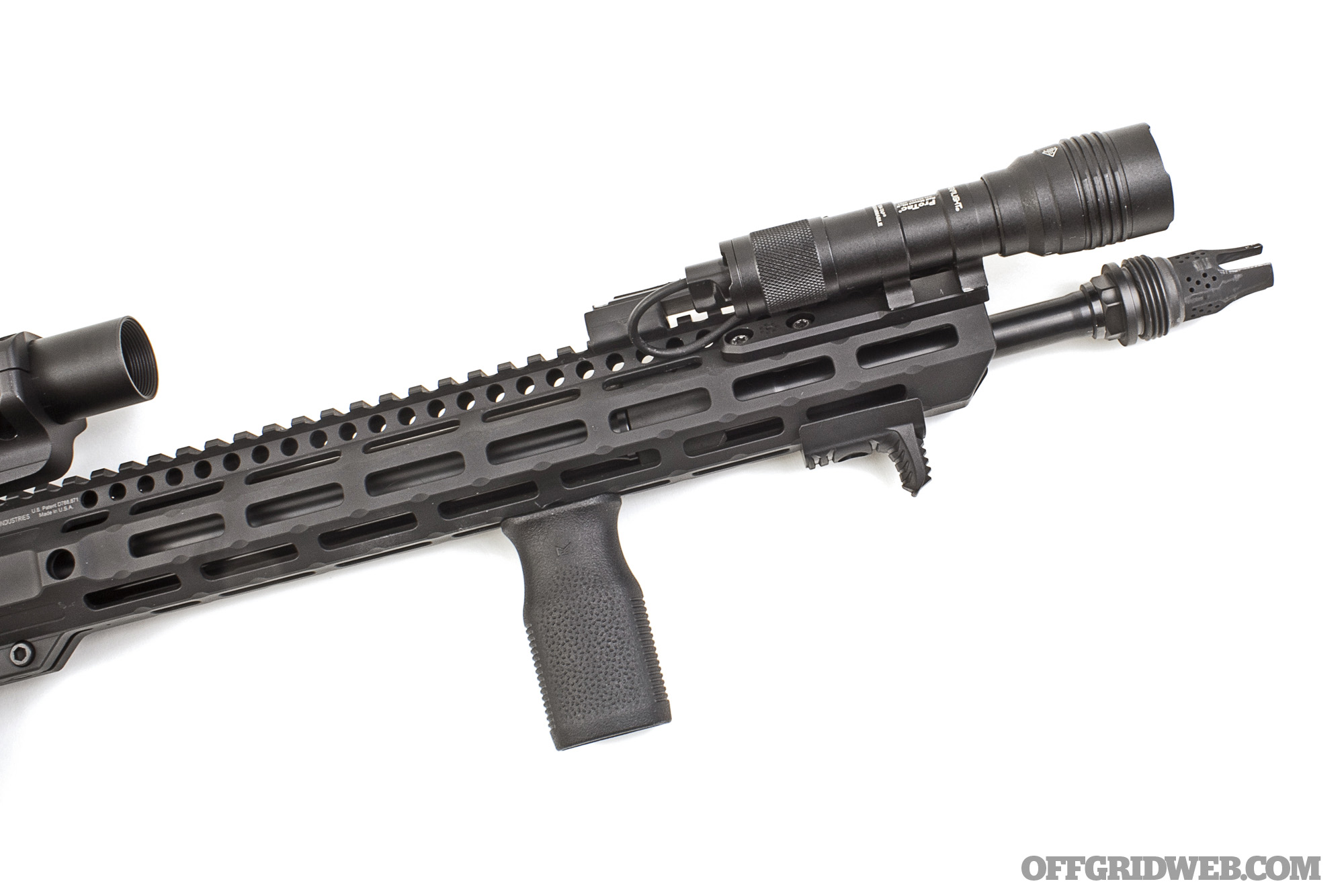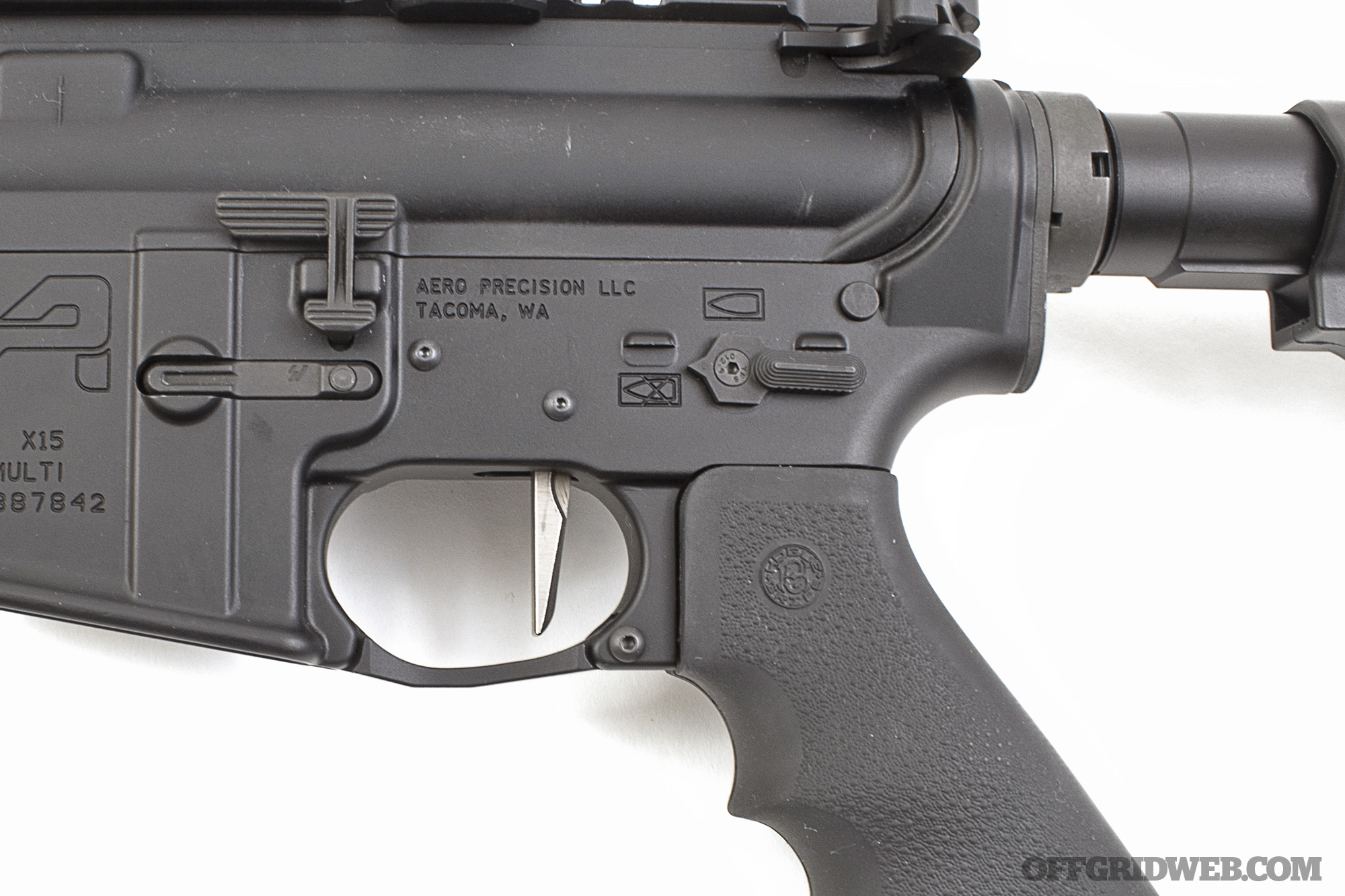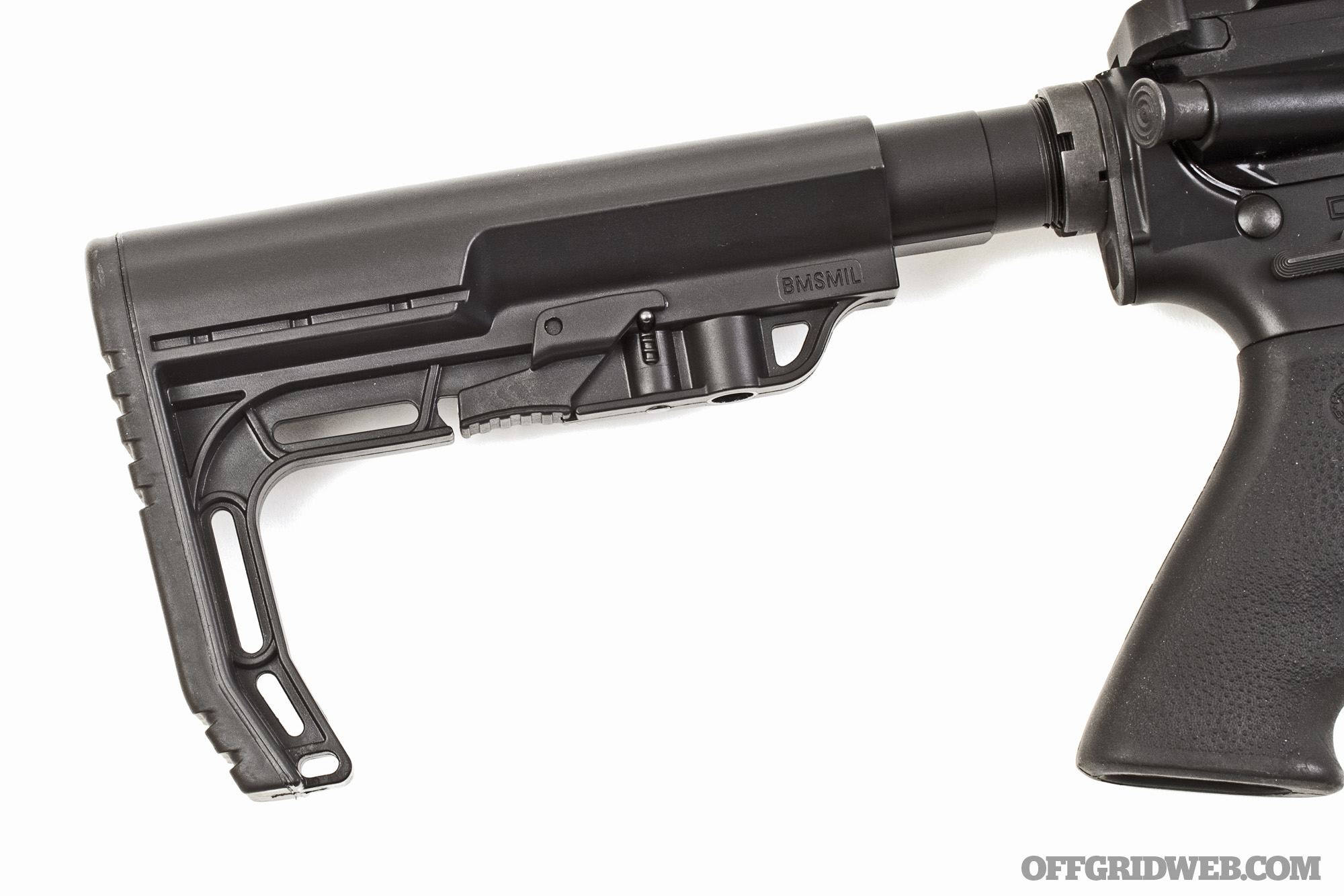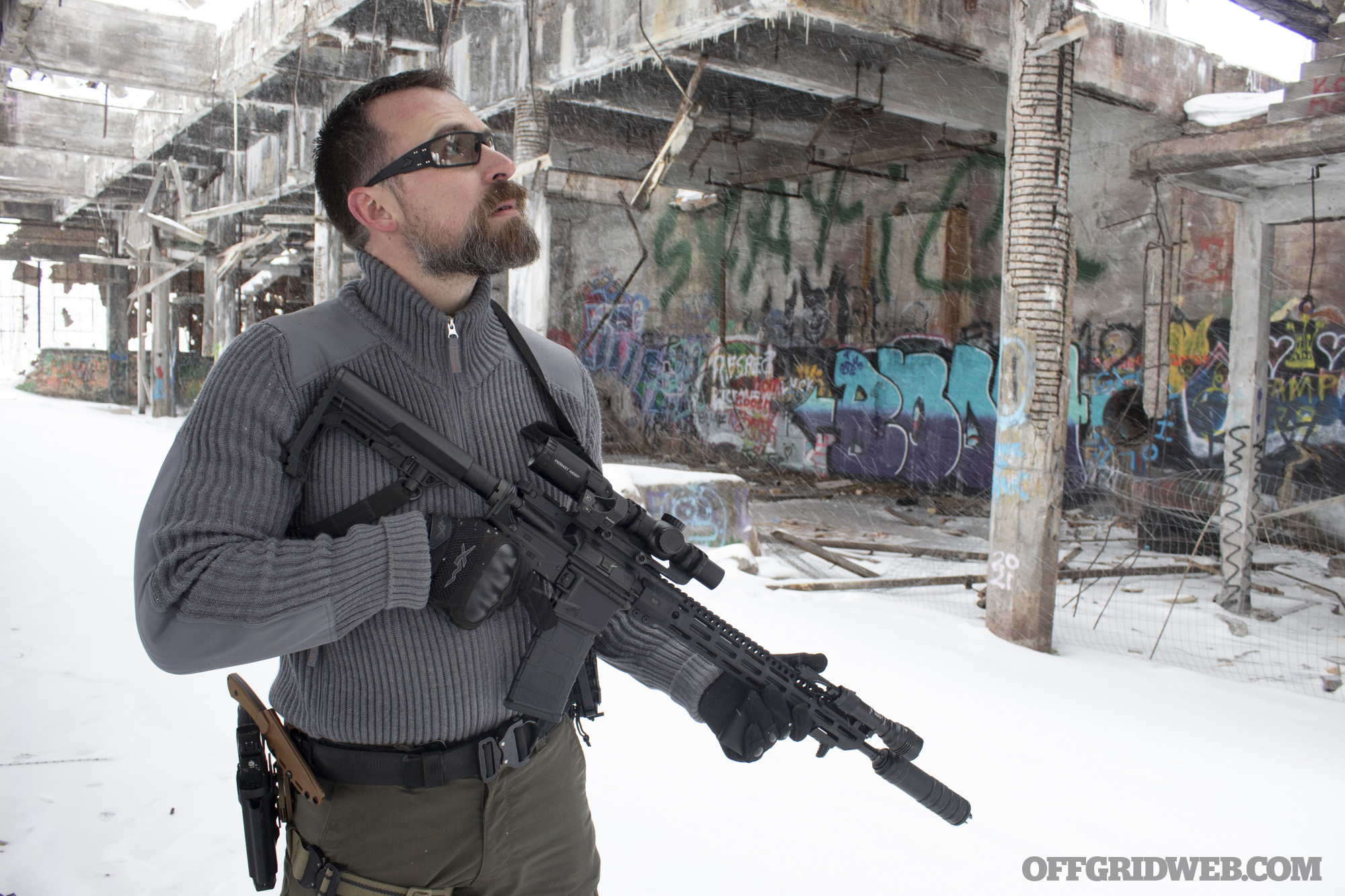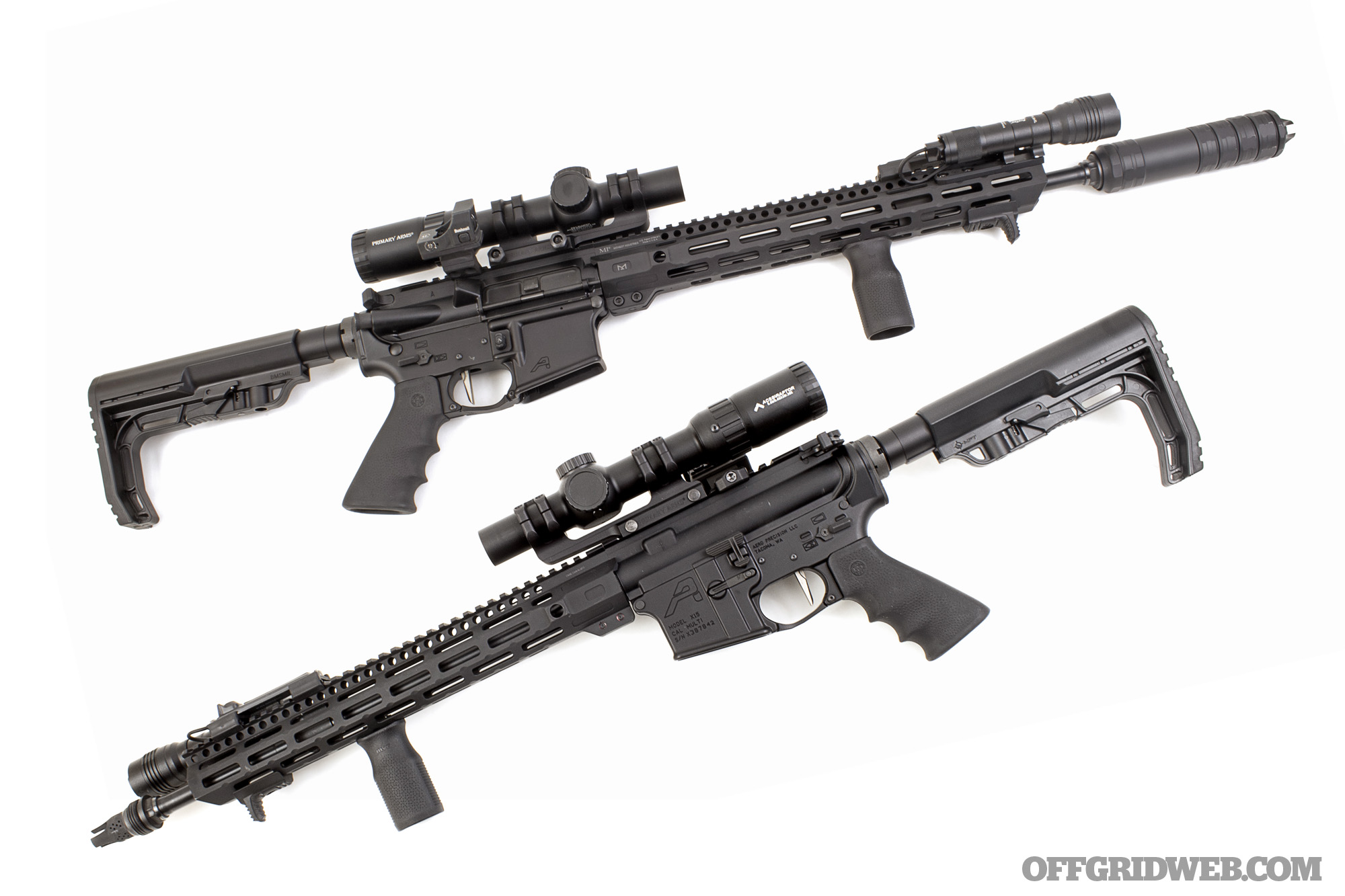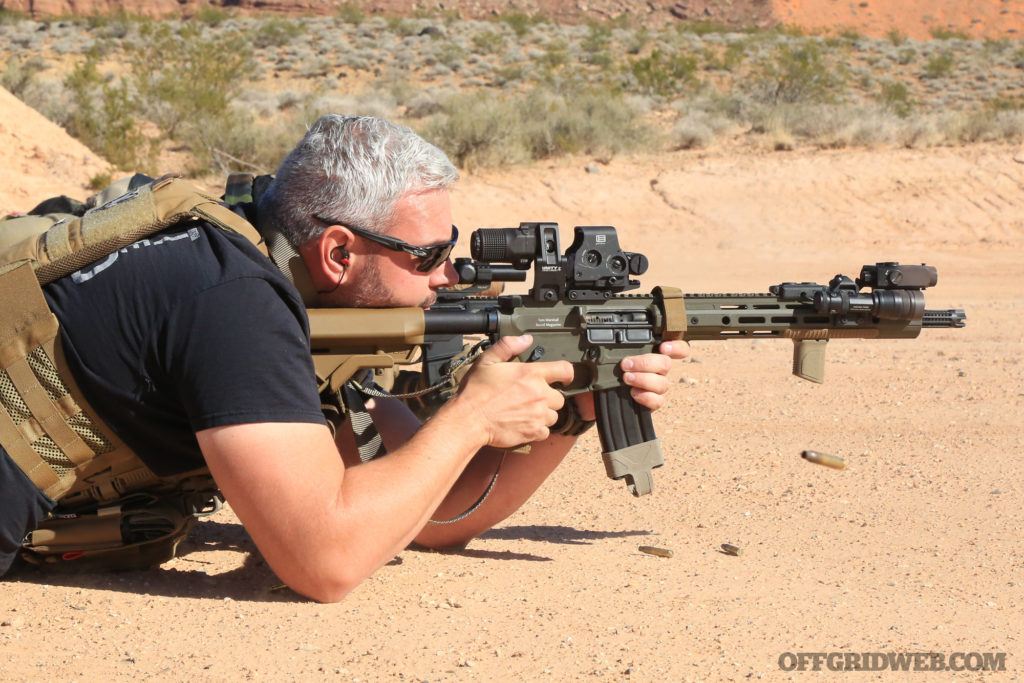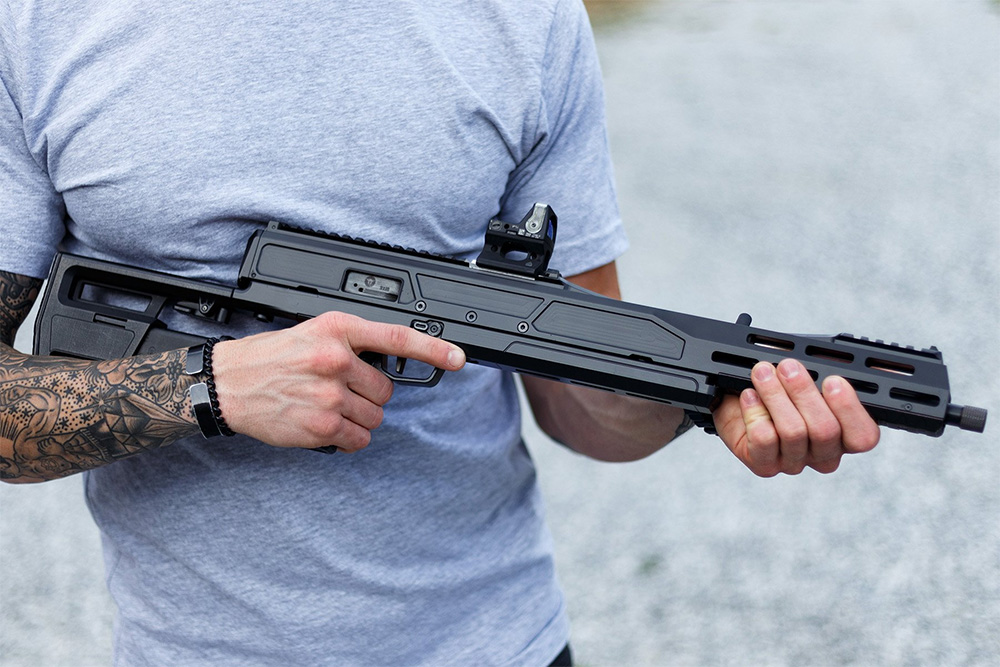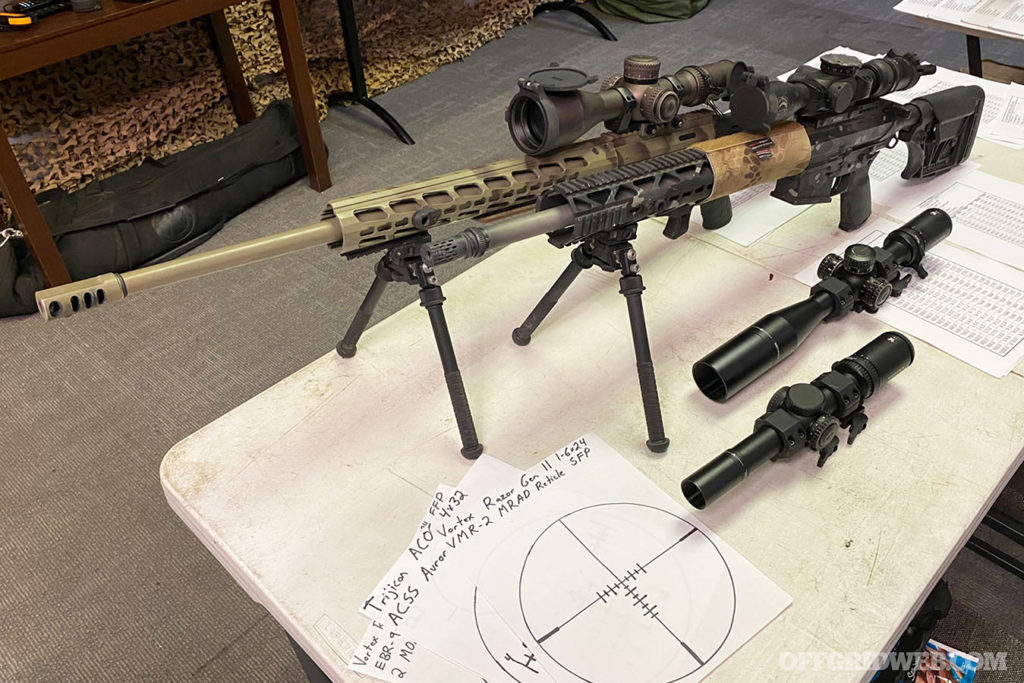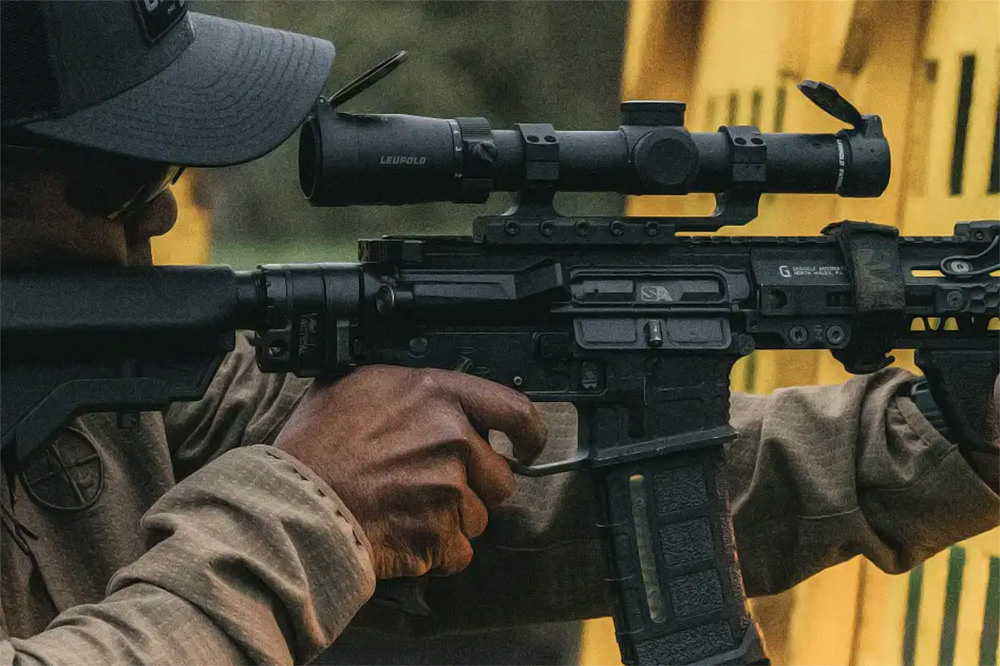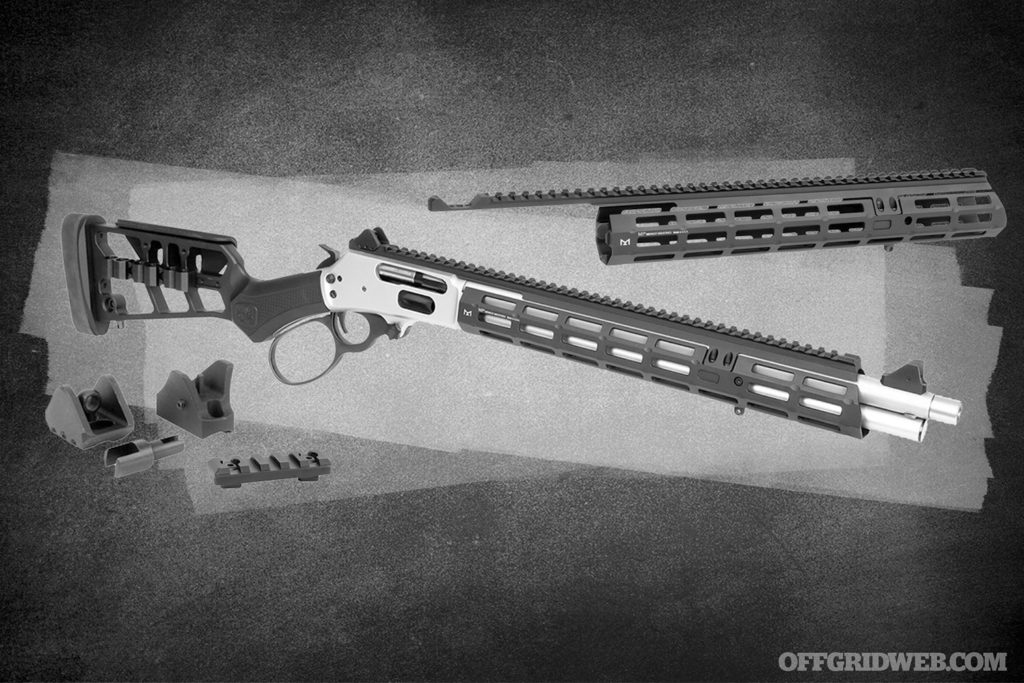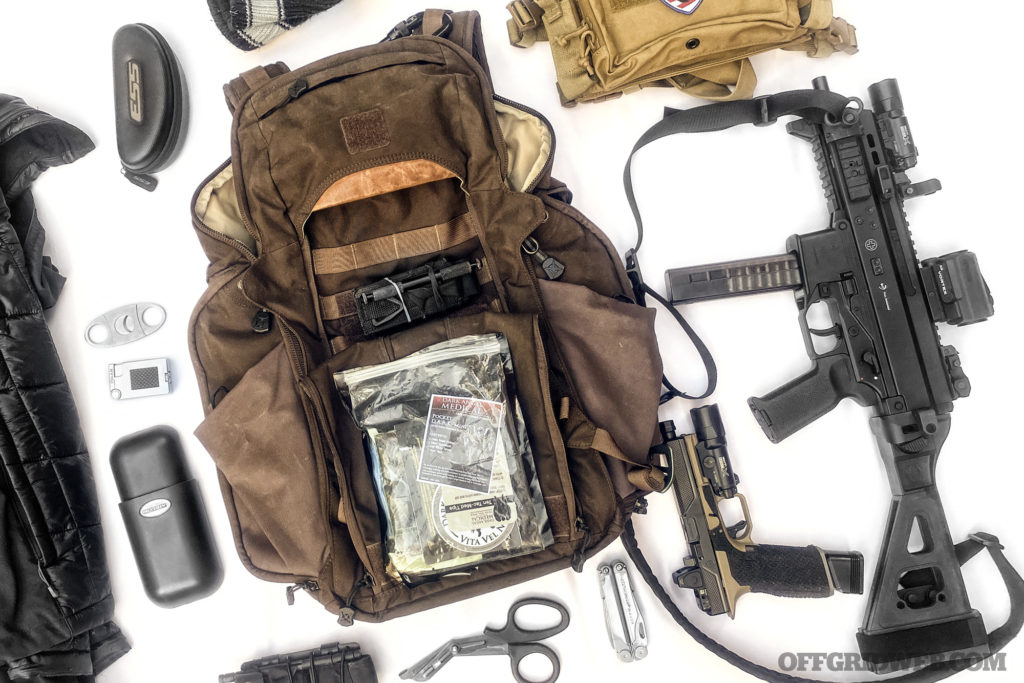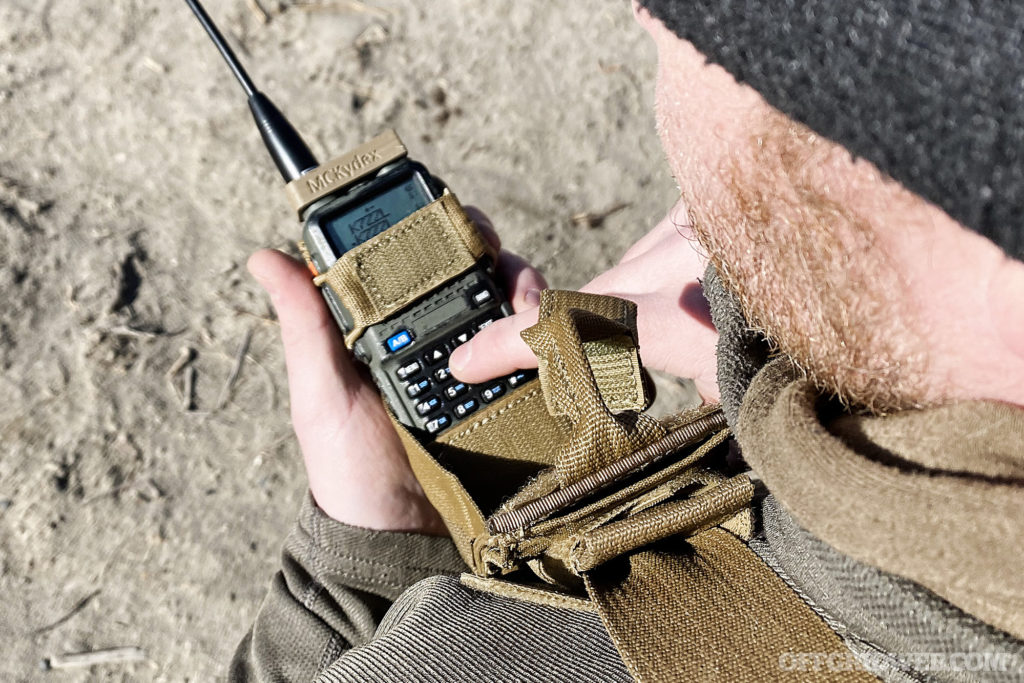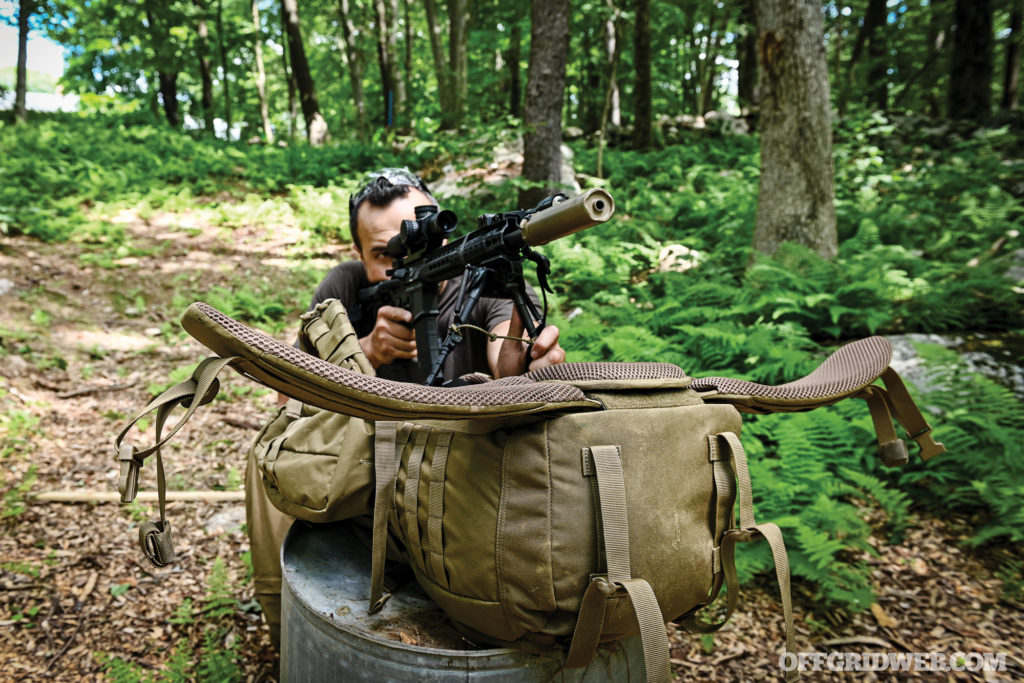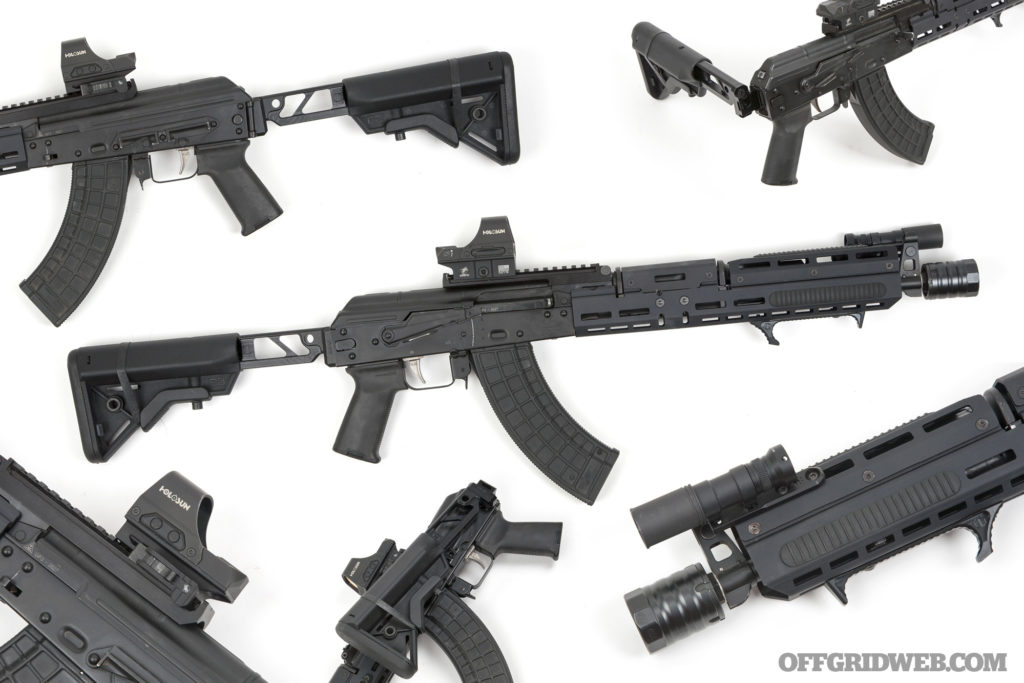Being ready for unforeseen circumstances is more challenging than it may seem at first glance. A deep dive down the rabbit hole of survival situations could very well lead to staying down said hole for some time. Trying to decide which firearm is the most versatile in a survival situation is no different, and it sparks a lot of interesting debate. Misconceptions and inaccurate information from social media confuses and confounds. With seemingly endless varieties to choose from, making a decision can quickly become overwhelming. Being a combat veteran, I thought I could avoid most of this confusion when first starting out on my journey to build the ultimate survival AR. Apparently, I was wrong! Roughly six years have passed since I was last in uniform, and I found the pace of advancing firearms technology to be staggering. Concepts that I once considered high-speed-low-drag have gone the way of the dinosaur. Thankfully, there are plenty of resources available to get caught up, and after much sifting through information and playing around with different configurations, I was able to come to a satisfying conclusion. I call this my General Purpose AR-15 (GPAR).
Editor’s Note: Welcome to part two of our three-part Tailor-Made ARs series, a conceptual approach to building task-focused, performance-driven rifles for emergency preparedness. Several RECOIL OFFGRID writers will each take a unique path to designing an idealized AR for survival and crisis response. We’ll examine how each weapon is tailored to the user, and how it can be creatively adapted to a multitude of dicey situations. We hope these builds reinforce the importance of choosing every component wisely with versatility in mind. If you missed part one, you can read it here.
Why I Went With an AR-15
Above: Light, agile, and versatile, the AR can quickly adapt to a multitude of scenarios.
Considering potential survival scenarios, such as needing to hunt for food, defense, or maintaining security while on the move, a firearm that’s light, fast, and lethal is a must. Running an off-the-shelf AR with a fully loaded 30-round magazine weighs approximately 6 pounds, half the weight of a battery-powered weed wacker. For the average adult, holding an AR at the ready shouldn’t result in fatigue as quickly as a heavier firearm would. This is important for several reasons: keeping your rifle trained on a dangerous intruder will not induce immediate arm quivering, carrying the rifle long distances will not turn into an agonizing death march, and it helps reduce the weight when adding other components.
Having a sidearm is also a lightweight option, but handguns can’t compare to the long-range effectiveness of a carbine, and most standard pistol mags are roughly half the capacity of a standard-capacity AR mag. Being able to accurately hit targets potentially farther than 300 meters with reliable lethality, while also having to reload less often is a huge win in the AR’s favor.
Built for reliability in punishing conditions, the AR makes operation simple, and troubleshooting easy to perform. With simplicity also comes a higher degree of safety. The less thought that has to go into operation, the more attention can be paid to the surrounding environment. Reloading an AR is quick after adequate practice and can be done single-handedly. Each magazine holds enough rounds to outlast most engagements, whether that’s harvesting game, stopping an intruder, or keeping heads down in a hostile environment. Many large-caliber hunting rifles have magazines with low capacities, making it necessary to pause and reload. Shotguns have even less capacity, and depending on the model, could be more complex to operate. For sustaining prolonged target engagement, all while maintaining the most situational awareness, the AR is a great way to go.
Above: This was my initial GPAR configuration, with holographic sight, offset irons, and light mounted to the bottom. This was quickly changed to the setup seen elsewhere in this article.
When it comes to felt recoil, an AR is light enough for this to be practically non-existent. Anyone who is a part of my survival crew, whether a man, woman, or child, can pick up the AR and fire without worrying about controlling the rifle or getting bruised shoulders. This also means that going to a range to train will be more enjoyable, especially when everyone can participate comfortably. Longer days at the range will further increase collective firearms proficiency. My wallet is happy as well, since I don’t need to purchase numerous firearms to meet everyone’s recoil sensitivities.
ARs are easy to break down for cleaning and maintenance, requiring minimal tools for simple upkeep. That being said, as long as the rifle isn’t being used to paddle through mud, it’ll withstand some pretty harsh environments without issue. As long as the bolt and firing pin are well lubricated and you’re using decent ammo, a high-quality AR can fire thousands of rounds without a single malfunction. And this goes for pretty much every environment on planet Earth.
An AR right out of the box will get the job done in a pinch, but one of the most amazing features of a modern AR is how endlessly customizable they can be. There are innumerable upgrades and add-ons to accommodate any style of shooting, in any environment. Looking to hunt mule deer on the open range? Throw a scope on the top rail and zoom in from afar. Need self-defense in an urban setting? Put a holographic or red-dot sight on it instead. Want both options? Build two upper receivers and swap between them. Successful survival depends on the ability to adapt, and the AR can adapt like a Terminator T-1000.
How I Built a GPAR
Having been out of the shooting loop for a few years, something that came as a huge surprise to me was how many calibers of ammunition an AR platform can accommodate. If I put my bifocals on and talk about how things were way back in the day (six years ago), there were only two major calibers available to the public: 5.56/.223 and 7.62×51/.308. Flash forward to today, and things have changed substantially. An AR’s upper receiver can now accommodate heavier calibers like 6.5 Grendel, 6.8 SPC, .300BLK, 7.62×39, and a myriad of others. As anything else, there are pros and cons to each; however, I went with the original 5.56 simply because it performs well and is relatively easy to come by. Even with ammo shortages plaguing the past several years, I could still find 5.56 or .223 on the shelves. I don’t remember seeing very much 6.5 Grendel or .300 BLK sitting around available for purchase, since ammo manufacturers focused on meeting demand for the most popular calibers.
When choosing an upper receiver, it’s important to think about the subtle differences between 5.56 and .223, and whether or not you want to shoot just one or both of those calibers. Being able to shoot both makes more ammunition available to utilize, but the barrel must be rated for both calibers. If the barrel is stamped and rated for 5.56 NATO or .223 Wylde, then it can shoot both 5.56 and .223 ammunition without incident. If the barrel is only rated for .223 Rem, attempting to fire 5.56 NATO could create problems down the line, although finding such a barrel in an AR built in the last 15 years is unlikely.
Pressure created when the AR fires a round forces gas through a tube above the barrel that cycles the bolt, ejecting the spent casing and reloading the new round. Chances are, choosing the proper gas system will not be too much of a concern unless you’re making a substantial change to barrel length or adding a suppressor (more on that later). For my build, I went with a mid-length gas system, which offers an excellent balance between reliability and low recoil.
Pistol and carbine-length systems can create over-gassing, a problem that accelerates the wear and tear on internal parts. There are intermediate and rifle-lengths available, but these can sometimes lead to under-gassing (the opposite of over-gassing), or force you into barrel lengths too long to maneuver in tight quarters. Mid-length is, in my opinion, the Goldilocks Zone of AR barrel and gas-system lengths.
Above: The final configuration of my GPAR includes more versatile optics, optimized light placement and simplified forward grip arrangement.
When it comes to the length of a rifle, federal law mandates a barrel of at least 16 inches in length. Anything shorter requires some paperwork, another background check, and several hundred dollars to the ATF. These are more reasons to stick with the Goldilocks of AR lengths, and why I went with a 16-inch barrel. Using this length, I can also swap out different muzzle devices without having to worry about whether or not I’m going to find myself in legal trouble.
Longer barrels used to mean more weight, especially if each side was covered with a bulky Picatinny rail system. This is no longer the case thanks to M-LOK, which holds accessories like lights and foregrips close to the handguard with much less mass on the forend. Ideally, the handguard should cover almost the entire length of the barrel; this offers more space to customize the placement and number of different accessories. In other words, it makes the AR more adaptable to a multitude of circumstances. For my GPAR, I used a pre-assembled upper half from Midwest Industries, featuring the 14-inch Combat Rail handguard. The Combat Rail is a no-frills handguard with seven sides of M-LOK slots and a full-length Picatinny top rail for optics, as well as built-in QD sockets for sling attachment.
I mated this upper half to a standard Aero Precision AR-15 lower. Aero, like Midwest, has a long reputation for good quality at affordable prices. This no-frills design was exactly what I was used to in the military, without excess cuts or exotic materials. It may not be high fashion, but it is high function.
Essential Accessories
After putting together the meat and potatoes of the AR, I wanted to optimize it for a multitude of survival situations. Sifting through the possible accessories and prioritizing what is most important, especially when on a budget, can be agonizing. Many upgrades that look cool or seem useful can easily detract from what’s truly important. But when functionality is boiled down, there are three simple things that every AR build should focus on first: a sling, optics, and illumination.
Easily overlooked, finding the right sling is probably one of the most crucial elements to a survival AR. In normal circumstances, such as hunting, being able to sling your rifle will allow you to field dress an animal or set up a blind without having to worry about where to set it. Other situations, such as home defense or getting away from civil unrest, will undoubtedly require the use of your hand for other tasks, and a sling will make this possible. A function for which I have always used a sling is as a stabilizing mechanism by wrapping the sling close to my supporting arm. Slings have gone through several stages over the years, transforming from a two-point sling (a “point” being where the sling connects along the length of a rifle), to a one-point, to a three-point, and back to a two-point. Each had their uses, but the two-point sling has stood the test of time and seems to be the most versatile of the styles. Since versatility and adaptability are the name of the game, I went with Haley Strategic’s D3 Sling, which features a low-profile shoulder pad for all-day comfort and can quickly transition between two-point and one-point configuration.
Above: The dual-optic setup offers immense capability while still being streamlined.
When it comes to aiming, there’s nothing wrong with iron sights. With practice, iron sights can be used to hit targets much farther than 300 meters. But if the budget allows and a sling is attached, the next upgrade should be a more advanced optic. Using an appropriate optic is a game changer for hitting targets with accuracy and precision, especially when time is of the essence. When considering which optic solution to add to my general purpose AR-15, I went back and forth between the speed of a reflex sight and the precision of a magnified optic. In the end, I decided that I’d choose both. In an ideal scenario, I’d want to identify potential threats and targets as far out as possible, thus necessitating the use of a telescopic optic. Primary Arms offers a Low-Power Variable Optic (LPVO) with a first-focal-plane reticle that’s true-to-scale, regardless of what level of magnification is being used. For faster engagement of up-close targets, an Arisaka Defense offset mount with a Bushnell RX250 red dot was added to handle any close-quarters situations.
Above: Replacing the holographic sight with an optic from Primary Arms enhanced my ability at distance.
My initial thoughts on sights in a survival situation revolved around having backup irons as my “fail safe” sights, in case the lens of my primary optic broke, or if the battery of a red-dot sight failed. I even threw some angled irons on the top rail to experiment with. Over time, my opinion about that changed as I did more research into the durability and battery life of modern red dots. Also, if my red dot fails, I can dial my LPVO down to 1x and use it almost as quickly. Glass-etched reticles don’t run out of battery and, short of taking a direct hard blow to the optic or mount, well-made scopes rarely fail to the point where you cannot see through them to put rounds down range.
The final essential is illumination, which is crucial for defensive situations, especially at night. A general rule of thumb, especially for carbine lights, is that more lumens are better. With current advances in light technology, 1,000 lumens should be considered the standard for duty or survival use. This will effectively keep a human aggressor blinded and maximize your ability to fully identify a target at the greatest distance in the dark (assuming the light uses an appropriate beam pattern).
Above: Even during the day, a high-output weapon light can come in handy, Mixed lighting environments are everywhere.
When I was still in the military, we placed lights directly underneath the barrel and close to a foregrip so we could easily reach the button to turn them off and on. But there was a fundamental flaw with this setup: The light would cast a shadow of the barrel almost directly where a human head would be, shielding an aggressor from the most effective blinding properties of the light. With modern pressure switches, a weapon light can be placed above and to the sides, ensuring that as much of the light as possible will reach a target’s eyes. To cover all of these features, I mounted a Streamlight ProTac HL-X as far forward on my handguard as possible, and added a tape switch to the top rail so my thumb can activate the light while holding it in a C-clamp grip.
Above: After learning about several grip styles, adjusting my light setup to accommodate the C-clamp grip places the tape switch and light in an ideal position.
Something I learned while experimenting with several light setups was how to appropriately manage the space they take up on the handguard. Generally, the more powerful a light is, or the more features it has, the larger and heavier it’s going to be. Finding the right balance of brightness, features, size, and weight may take a little experimenting before it feels right.
Endless Options
Having the core GPAR necessities covered, I began to think about other factors that could play a vital role in survival situations. One of the first scenarios that came to mind was the signature of the rifle when firing. Explosive noise and muzzle flash aren’t ideal for keeping healthy eardrums or for remaining concealed. Yes, there are plenty of hearing protection options available, but many of them diminish the ability to maintain situational awareness, and donning ear pro may not be a top priority in a life-and-death scenario. Using a suppressor is an effective way to reduce the risks of ear-drum damage or giving away a firing position.
Above: A well-thought-out GPAR should be the pièce de résistance of your preparedness kit, capable of excelling in a myriad of situations.
There are basically two legal options available. The first is the traditional method of purchasing a suppressor. This is a great option if you can afford the suppressor as well as the tax stamp and are willing to wait eight to 12 months (at time of writing) for the ATF to process the Form 4. The second option is to purchase a solvent trap, and modify it yourself to build a suppressor. This is also perfectly legal (at time of writing) if you file the required ATF Form 1 beforehand. The Form 1 will require the same background check and $200 fee as a Form 4, but Form 1s can be filed electronically from home and the processing time is around one month, as opposed to one year. Also, most solvent traps are much more affordable than retail suppressors.
It’s important to note that not all solvent traps are created equal, and it’s necessary to do a little research before making a purchase. To satisfy my suppression requirements, I went with JK Armament’s Rifle Caliber Kit Modular Solvent Trap (MST), which came with everything I needed to create a suppressor. (Side note: If you don’t have the approved tax stamp from the ATF before making modifications to an MST, you will be committing a felony. So, make sure you have everything squared away before you start drilling holes.) One great thing about an MST kit is that you can add or remove individual modules from the finished suppressor, making it more versatile.
Above: JK Armament’s muzzle device functions as both a stand-alone comp and a mount for their MST.
Let’s circle back briefly to the discussion of over- and under-gassing from earlier. Using a suppressor will absolutely affect the behavior of your AR’s gas system — sometimes dramatically. Adding too many modules to an MST suppressor can result in double feeds and overall poor cycling, sometimes requiring changes be made to the buffer and buffer spring. Taking the time to correct these issues is a critical part of tuning an AR. Buffers and buffer springs come in a variety of weights and tensions, and finding the right combination will go a long way to improving or perfecting your AR’s performance with or without a suppressor. Felt recoil, reliability, and service life can all be improved by a well-informed choice of buffer and spring.
Another important upgrade to a general purpose AR-15 is the trigger. Mil-spec trigger pull weight is almost 7 pounds, and other stock models can range anywhere between 5 and almost 10 pounds. The higher the pull weight, the more likely the AR will be jerked slightly off-target when the trigger is engaged. Also, swift and accurate follow-up shots are more difficult, and overall proficiency requires additional training. I added the RISE Armament RA-242 trigger to this build, which was a drop-in cartridge that was very simple to install. The result reduced my pull weight to 3.5 pounds with no excess movement before or after the break.
Above: A match-grade trigger and enhanced controls can help speed up or streamline manipulations like reloads and malfunction clearance.
How an AR is handled is a personal choice, but for the sake of precision and grip stamina, I included a Magpul vertical foregrip and a Strike Industries LINK handstop on the bottom front of the handguard. Having a vertical foregrip gives my supporting hand an immovable index point that I don’t have to worry about slipping over due to its length. It also gives me another gripping option if for whatever reason I wouldn’t want to maintain a C-clamp grip. The LINK hand stop at the very front gives me an edge to brace the rifle into a doorway, windowsill, or any other barricade that’d come in handy for a support. I rounded out the furniture setup with a Battlelink Minimalist Stock (BMSMIL) from Mission First Tactical.
Above: Observing minimalism, such as with this Mission First Tactical BMSMIL stock, reduces weight and keeps things simple.
Finally, I wanted my GPAR to be functional in as many situations as possible, including if one of my hands was unable to perform its typical functional roles. To ensure I could operate the AR with either of my hands, I replaced the charging handle, bolt catch and safety with ambidextrous controls from Strike Industries. Ambidextrous controls allow me to engage a target, swap a mag, or perform malfunction clearance even if I became injured or had to engage in other tasks.
Parting Shots
Deciding to build a general purpose AR-15, to me, was all about getting the most out of what an AR had to offer. And even though I had assumed I knew enough, almost everything I had understood about an AR’s functionality and capabilities had changed in only a handful of years. What I started out with was based on an old way of thinking. What I ended up with was a vastly superior and more adaptable setup. If you’re like me and aren’t fully immersed in the world of firearms on a regular basis, you may come to find that many old-doctrine methods and setups have become irrelevant. It can be frustrating to grapple with at first, but improving and building off of lessons learned from the past is important. To make things less overwhelming when setting up a survival AR or GPAR, start with the base platform and then go one step at a time. Find that perfect sling, optic, and light. Experiment with the setup and test it out, tweaking and readjusting as you go. The more you fine-tune this basic setup, the better you will understand what additional components you could add to make the platform perfect.
The truth of the matter is, a survival AR is highly personalized and dependent on what you’re intending to survive. Sometimes it’s prudent to tune out the social media personalities and listen to what your rifle is telling you. If it feels uncomfortable or awkward, then your setup needs adjusting. One of the best things you can do for yourself is to find people with experience, take their advice — not as gospel, but as guidance — and use what works best for you. Try out different components, and if it works, keep it. If not, send it back. Building the perfect general purpose AR-15 isn’t an endeavor that can be accomplished overnight. And above all else, once it’s configured, go to the range and train. A lot. Consider enrolling in classes and competitions to pressure-test your gear and skills. All the latest and greatest equipment in the world means nothing unless you have taken the time to build the chops to use it when it counts.
SOURCES
- Aero Precision > aeroprecisionusa.com
- Rise Armament > risearmament.com
- Strike Industries > strikeindustries.com
- Mission First Tactical > missionfirsttactical.com
- Midwest Industries > midwestindustriesinc.com
- Primary Arms > primaryarms.com
- Bushnell > bushnell.com
- Arisaka Defense > arisakadefense.com
- Streamlight > streamlight.com
- JK Armament > jkarmament.com
- Magpul > magpul.com
- Haley Strategic > haleystrategic.com
Related Posts
The post Tailor-Made ARs Part 2: A Veteran’s General Purpose AR-15 appeared first on RECOIL OFFGRID.



